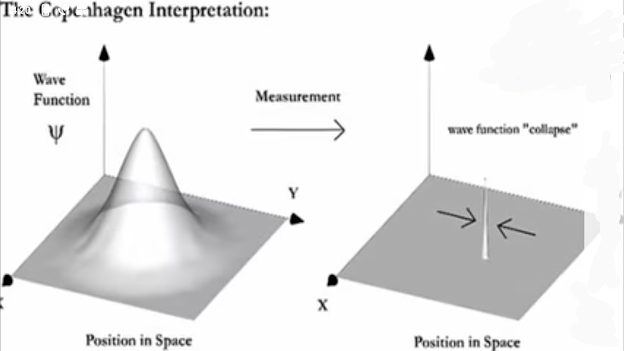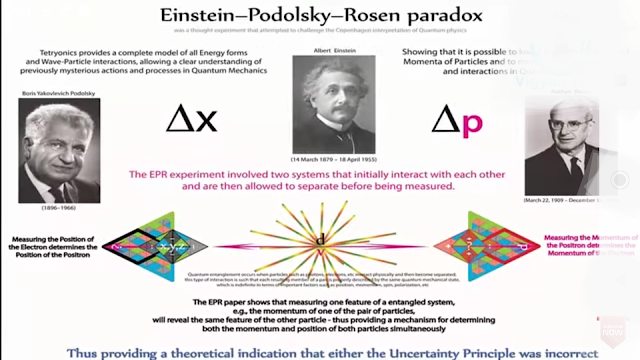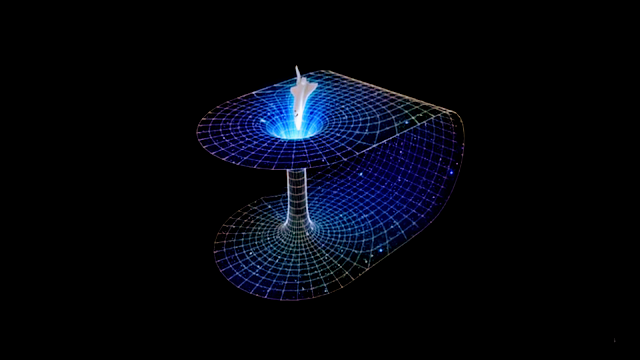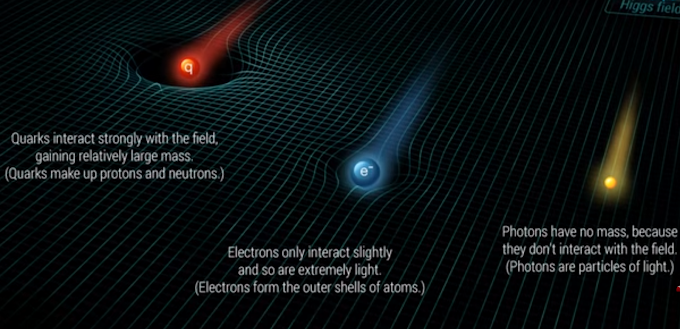INTRODUCTION
Quantum entanglement is a physical phenomenon that occurs when pairs or groups of particles are generated or interact in ways such that the quantum state of each particle cannot be described independently of the others, even when the particles are separated by a large distance—instead, a quantum state must be described for the system as a whole.
Measurements of physical properties such as position, momentum, spin, and polarization, performed on entangled particles are found to be appropriately correlated. For example, if a pair of particles are generated in such a way that their total spin is known to be zero, and one particle is found to have clockwise spin on a certain axis, the spin of the other particle, measured on the same axis, will be found to be counterclockwise, as to be expected due to their entanglement. However, this behavior gives rise to paradoxical effects: any measurement of a property of a particle can be seen as acting on that particle (e.g., by collapsing a number of superposed states) and will change the original quantum property by some unknown amount; and in the case of entangled particles, such a measurement will be on the entangled system as a whole. It thus appears that one particle of an entangled pair "knows" what measurement has been performed on the other, and with what outcome, even though there is no known means for such information to be communicated between the particles, which at the time of measurement may be separated by arbitrarily large distances.
Quantum Entanglement And Relation With Reality
Albert Einstien believed that reality is permanent, meaning that this universe is always present, no matter whether anyone is watching it or not. Our entire classical physics follows this principle. In scientific language, it is called Realism. But in 1925, Niels Bohr and his assistant Heisenberg told through Copenhagen Interpretation that the absence of the observer makes no sense of the reality of this universe. Quantum Mechanics also cannot confirm the outcome of the experiment. It can only tell the possibilities only. They talked about the wave function which represents the state of a system, in which all the information related to the system is related. He said that the wave function of the system collapses when we make an observation and in the end only one result comes, what we consider to be the definite result. It also meant that reality was only an illusion based entirely on observer. However this theory did not digest the Einstien at all.
He said that Quantum Physics cannot tell the results of an experiment because we do not know all of its variables. Once we know the hidden variables, we will be able to tell the results of any experiment of quantum physics in advance just like Classical Physics and that too with accuracy. He said that to prove the theory of Borhs correct, the locality principle has to be proved wrong which is the basic mantra of Relativity Theory. Let's see what locality is?
What Is Locality Principle?
According to Einstein, any object or wave affects only the surroundings around it. This means that information will have to pass through B and C to reach D. It is not possible at all to reach directly from message A to D because according to Relativity no object can travel faster than the speed of light.
Therefore, it is not possible at all that any information can be reached from one place to another faster than light speed in the universe. On the other hand, Bohr and Heisenberg remained adamant on their theory and tried to explain that Locality or Reality is not permanent. Whatever result we get is only due to the collapse of the wave function. To prove Bohr's wrong, Einstien together with B.podoisky and N.Rosen founded the EPR Paradox and gave birth to a new mysterious concept of Quantum Physics called Quantum Entanglement.
According to Quantum Entanglement, when two parts are born or meet, then their wave function becomes entangled i.e. that property of one depends on what is happening with the other. To understand this, suppose that if the spin of one entangled particle is anti-clockwise, the spin of the other will definitely be clockwise. Everything was fine till here but even when the entangled particles were kept far away from each other, they were still showing the entangled property and that too instantly. Meaning that if the spin of one comes anti-clockwise according to your measurement, the spin of the other entangled particle will automatically become clockwise and that too immediately. It seems as if entangled particles talk among themselves, it was strange. So, Einstien called it Spooky Action At A Distance. He said that there will be hidden variables in entangled particles, due to which they show such property. In the absence of experiments, everyone accepted the matter of hidden variables of Einstien but as time went by we got developed. Scientists conducted experiments to understand Quantum Entanglement many times, but each time the same result was revealed which was surprising. Actually, for entangled particles, it does not matter which corner of the universe you are or the distance between them. Whenever you know the spin direction of one, the other will immediately change its spin direction accordingly. This proves Einstien wrong as the exchange of information between entangled particles is faster than the speed of light, which is against the Theory of Relativity, which means the Bhors were correct. When we measure the spin direction of one of the entangled particles, then the entire wave function collapses, as a result of which both particles choose the opposite spin and that too instantly.
So, Is reality not permanent? We cannot say anything about it now because maybe entangled particles use wormholes or a portal to exchange information among themselves?
To understand the complex theories and mysteries in simple layman's language, Please Subscribe Us
Related post:
. Where is the center of the universe? Click here
. DARK MATTER AND DARK ENERGY-THE UNSOLVED MYSTERY. Click here
. The God particle or Higgs boson theory- Explained. Click here










0 Comments